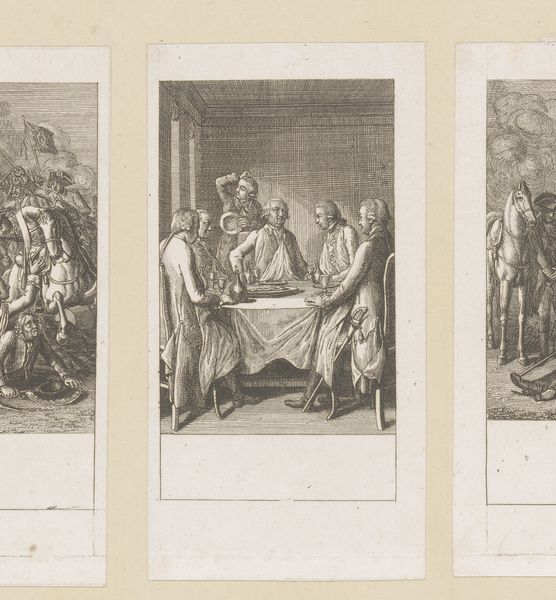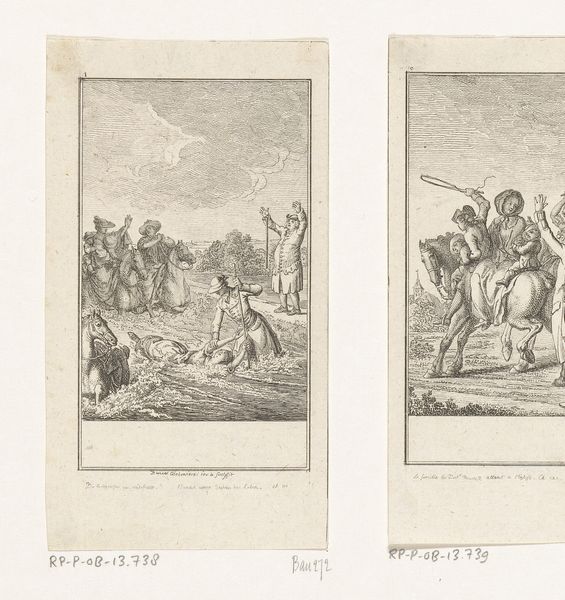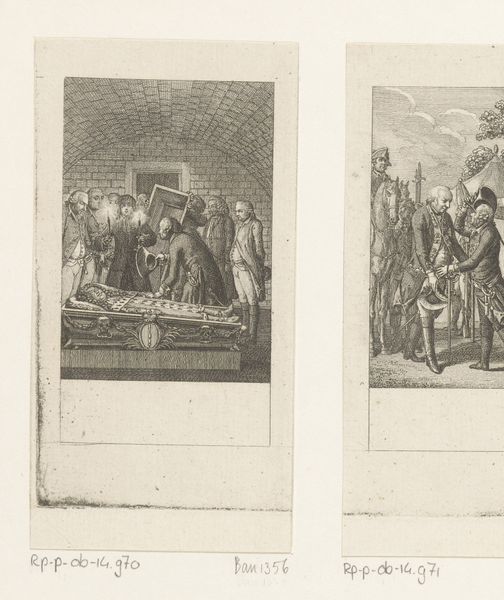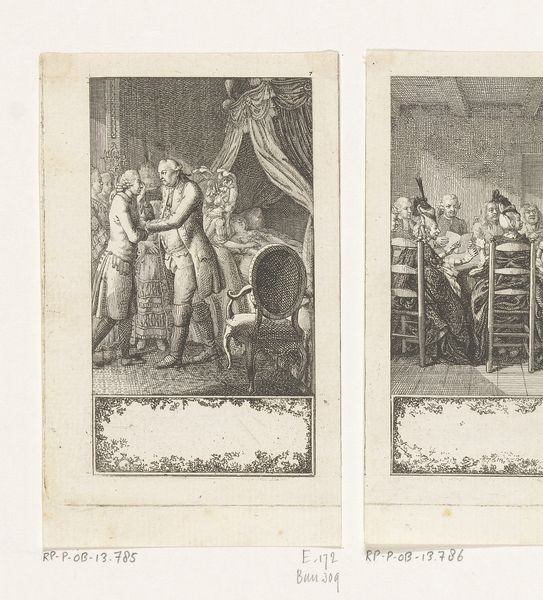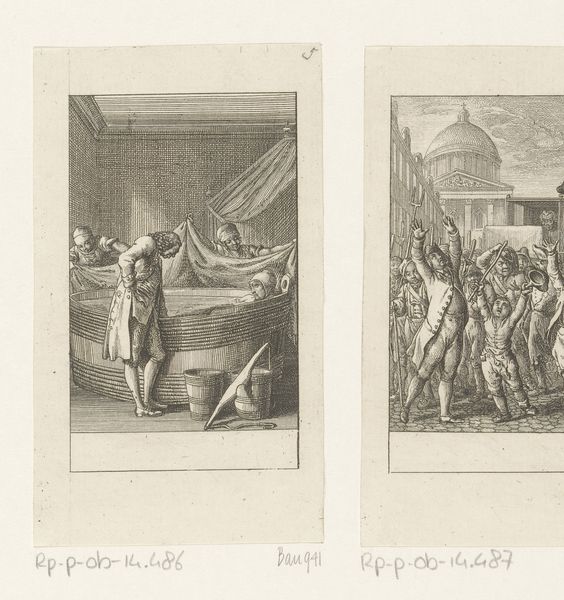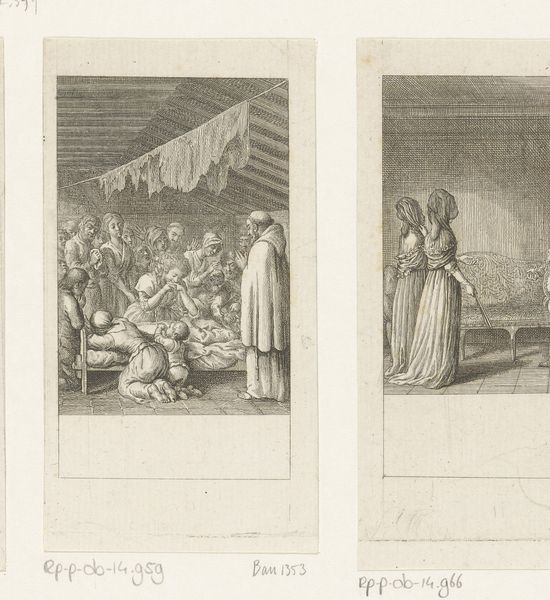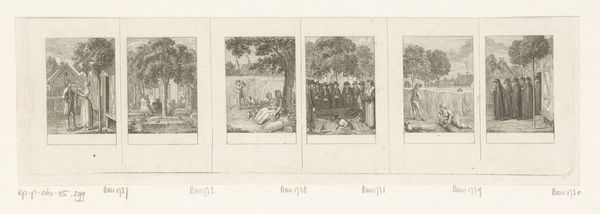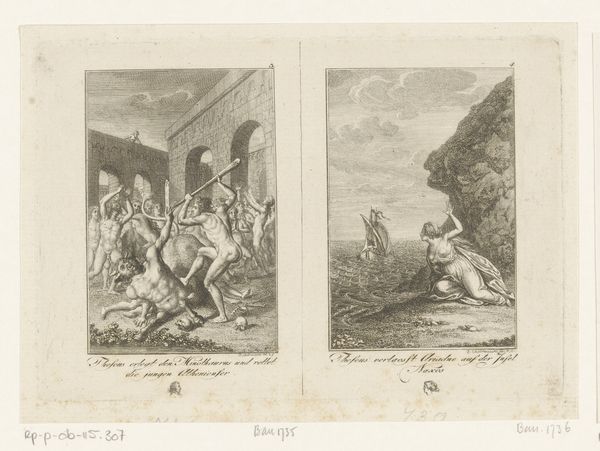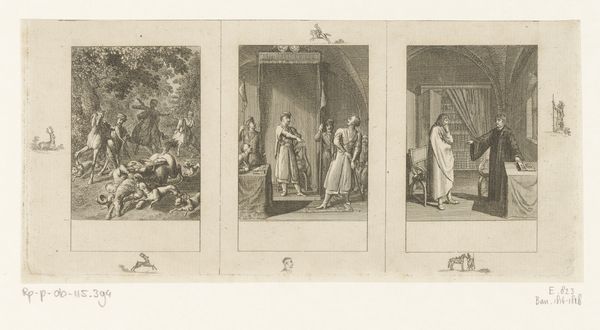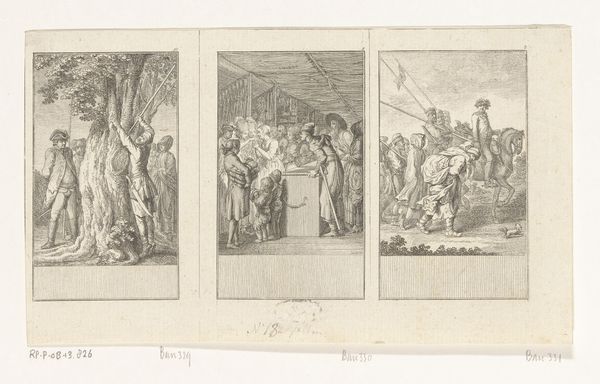
print, engraving
#
narrative-art
# print
#
figuration
#
history-painting
#
engraving
Dimensions: height 117 mm, width 63 mm
Copyright: Rijks Museum: Open Domain
Curator: Here we have an 18th-century engraving from an anonymous artist, titled "Soldiers Mourning a Fallen Soldier," housed here at the Rijksmuseum. Editor: My first impression is just…somber. The etched lines, the grayscale – it’s visually heavy with grief, especially focused on the limp body of the fallen soldier and the bowed heads around him. Curator: The work itself exemplifies the 18th century's interest in memorializing historical narratives, particularly through printmaking. Prints like these played a vital role in disseminating information and shaping public perception of events, especially during times of war. Editor: Absolutely. I’m curious about the production of such images; the labor involved in creating these intricate lines through engraving. The level of detail must have taken a considerable amount of time and skill, think of the social consumption involved. How many impressions were made? And who was able to afford to purchase this particular print, further amplifying its reach and impact? Curator: Well, prints such as this often had a broad appeal because they were comparatively more affordable than paintings. Dissemination often involved networks of printers, publishers, and distributors, and then the physical act of viewing – where was this image likely displayed? Was it a framed work in someone’s home, or a circulated sheet that formed a part of someone’s education? Each interaction added to the work’s cultural impact. Editor: Considering the political backdrop is essential here. Who commissioned it? What narrative were they trying to control? Look at the expressions – the stoicism mixed with sorrow. What kind of message did it broadcast to those outside the military? And what effect did it have on them? Curator: I appreciate you framing this in the context of the political and social landscape. These prints often served specific purposes: to justify military actions, garner support, or perhaps mourn the cost of conflict. The layered presentation you mentioned is certainly central here to the complexity of representation and interpretation. Editor: Understanding the social and economic factors behind this piece – from the availability of materials, such as ink and metal plates, to the market for these images – gives us valuable insights. And looking beyond those things makes this print, which might otherwise remain as a simple image from history, a powerful representation of a complex moment. Curator: Indeed. This anonymous print acts as an invaluable window into both the artistic practices and societal sensitivities of the 18th century.
Comments
No comments
Be the first to comment and join the conversation on the ultimate creative platform.
